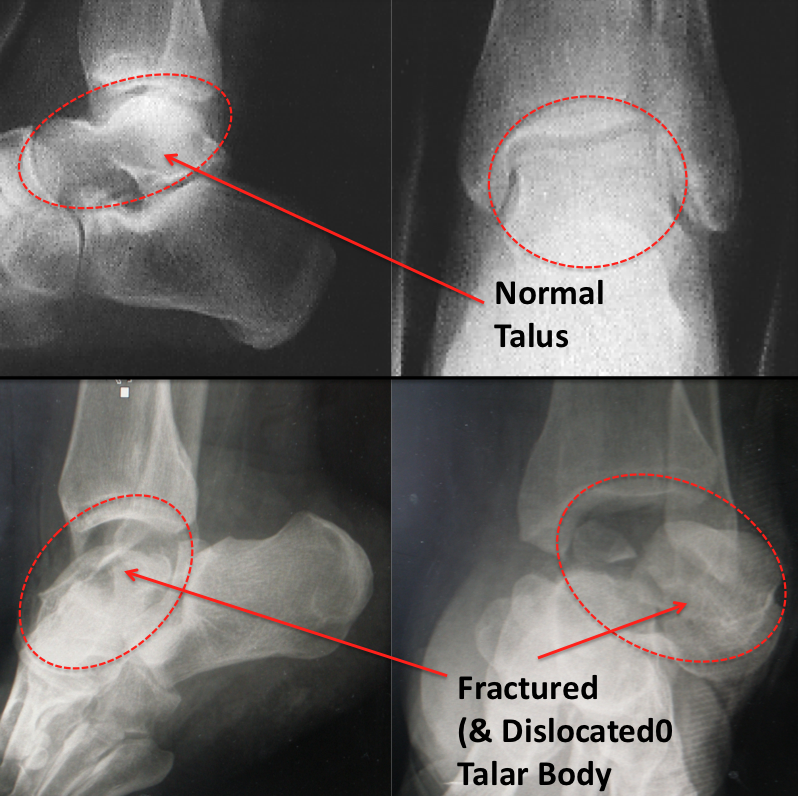

Immobilisation in a boot if required, to allow the tissues to rest and heal.Physiotherapy to strengthen the ankle and lower limb.Use of ankle brace to protect the ankle while easing back into activity.Nonoperative treatment is the preferred option for small lesions. These lesions are not only confined to articular hyaline cartilage, they can also affect the subchondral bone at the weight-bearing aspect of the talar dome. Using a foot orthotics to better align the ankle Osteochondral lesions of the talus (OLT) are a well-known cause of ankle joint pain and can sometimes lead to instability.Usually, we aim to treat talar dome lesions conservatively. Treatment options for talar dome lesions? In most cases, an MRI scan will be a definitive diagnosis of a talar dome lesion. Many times, this diagnosis is based primarily on a thorough patient history. The medial lesions tend to be deeper and cup shaped whereas the lateral lesions tend to be thinner and more wafer shaped ( 2 ). Symptoms for talar dome lesions may be intermittent, and pose a difficulty to diagnose. Anatomy Although osteochondral lesions can occur over any portion of the talar dome or the tibia, the talar lesions typically occur over the anterolateral or the posteromedial talar dome. Occasional swelling of the ankle – especially when bearing weight, subsiding during rest.Occasional feeling of ankle being “stuck” or “catching” of ankle.Chronic deep pain in the ankle, usually worse with activity (especially during sports), and less with resting.Some signs and symptoms of a talar dome injury include: How do I know if I have a talar dome injury? Mild flattening of the talar dome with diffuse altered MR signal of the majority of the talus bone with relative sparing of the anterior most aspect of the talar head. In some cases, the ankle pain associated with a talar dome lesion can take months to surface following the precipitating event or injury. However, it can also be caused as a result of repeated microtrauma to the talus. This is typically caused by a traumatic event, such as an ankle sprain. Usually, there is variable involvement of the subchondral bone of the talus, and cartilage. In a joint, the cartilage is anatomically linked to the underlying bone (called subchondral bone). It is also known as an osteochondral lesion of the talus. In most cases, several treatment options are viable, and the choice of treatment is based on defect type and size and preferences of the treating clinician.Talar dome lesions are focal injuries to the talar dome – a part of a significant bone of our foot, the talus. Publications on the efficacy of these treatment strategies vary. The target of these treatment strategies is to relieve symptoms and improve function. Furthermore, smaller lesions are symptomatic and when left untreated, OCDs can progress current treatment strategies have not solved this problem. Surgical options are lesion excision, excision and curettage, excision combined with curettage and microfracturing, filling the defect with autogenous cancellous bone graft, antegrade (transmalleolar) drilling, retrograde drilling, fixation and techniques such as osteochondral transplantation and autologous chondrocyte implantation (ACI). Talar dome injuries such as osteochondral lesions of the talus (OLT) can occur following an ankle injury, resulting in ongoing residual ankle pain and. The common treatment strategies of symptomatic osteochondral lesions include nonsurgical treatment, with rest, cast immobilisation and use of nonsteroidal anti-inflammatory drugs (NSAIDs).

There is a wide variety of treatment strategies for osteochondral defects of the ankle, with new techniques that have substantially increased over the last decade. In more than one third of cases, conservative treatment is unsuccessful, and surgery is indicated. At any stage of this sequence, the radiographic findings can vary depending on differences in the vascular status of the talus and the degree of bone repair. Whether OLT is a precursor to more generalised arthrosis of the ankle remains unclear, but the condition is often symptomatic enough to warrant treatment. At radiography, talar AVN typically manifests as an increase in talar dome opacity (sclerosis), followed by deformity and, in severe cases, articular collapse and bone fragmentation. A variety of terms have been used to refer to this clinical entity, including osteochondritis dissecans (OCD), osteochondral fracture and osteochondral defect. Osteochondral lesion of the talus (OLT) is a broad term used to describe an injury or abnormality of the talar articular cartilage and adjacent bone.


 0 kommentar(er)
0 kommentar(er)
